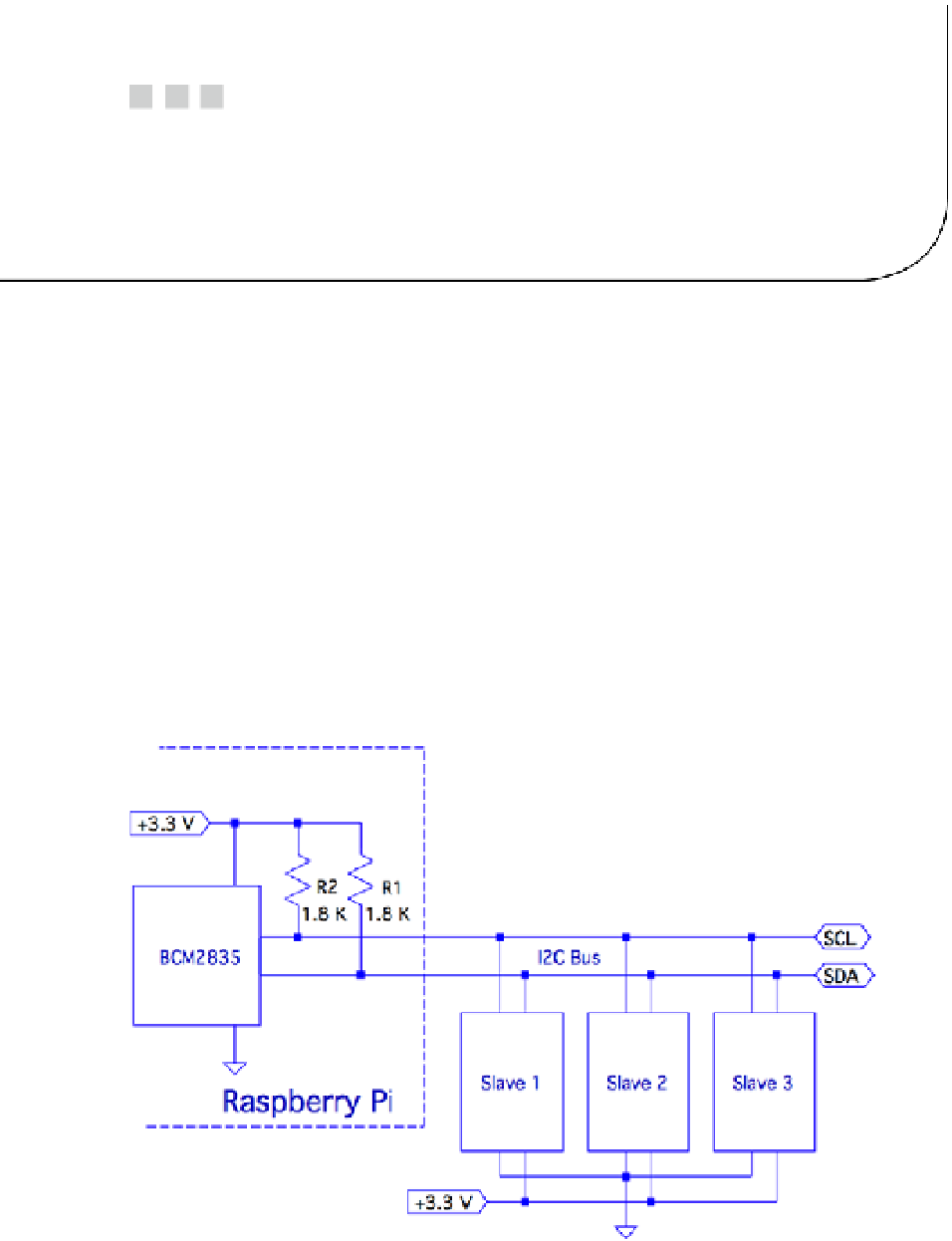Hardware Reference
In-Depth Information
Chapter 12
I2C Bus
The I2C bus, also known as the two-wire interface (TWI), was developed by Philips circa
1982 to allow communication with lower-speed peripherals.
49
It was also economical
because it required only two wires (excluding ground and power connections). Since
then, other standards have been devised, building upon this framework, such as the
SMBus. However, the original I2C bus remains popular as a simple, cost-effective way to
connect peripherals.
I2C Overview
Figure
12-1
shows the I2C bus in the Raspberry Pi context. The Raspberry Pi provides
the I2C bus using the BCM2835 as the bus master. Notice that the Pi also provides the
external pull-up resistors
R
1
and
R
2
, shown inside the dotted lines.
Figure 12-1.
The I2C bus

